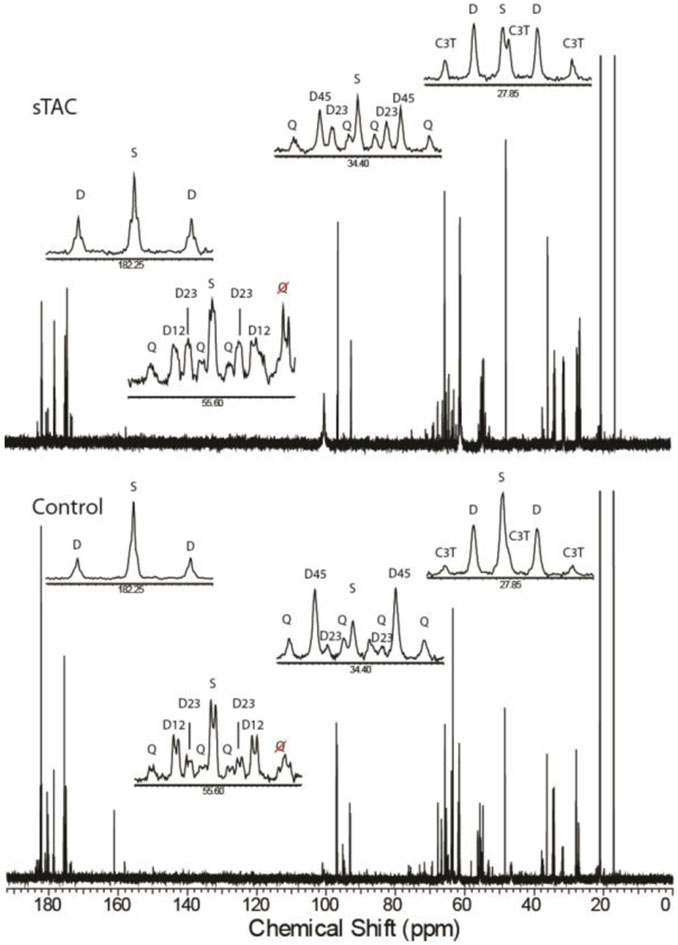Figure 3.
Carbon-13 spectra with expanded regions obtained for extracts of a heart with a sham surgery (bottom) and with sTAC (top) display the 13C-13Cj-coupling characteristic of highly 13C-enriched glutamate. The C5 position of glutamate (182.25 ppm) is composed of a singlet (S) and a doublet (D), the ratio of which allows the fractional contributions of ketones to the acetyl-CoA enrichment to be inferred. The C4 position (34.4 ppm) reveals the competition between fatty acids and glucose for the production of acetyl-CoA through the relative ratios of the singlet and D23 doublet to the D45 doublet and the doublet of doublets, or Q, peaks that arise from glutamate enriched at the C3, C4, and C5 positions simultaneously. Glutamate C3 (27.85 ppm) and the C2 (55.6 ppm) provide complementary information. In the case of the C2 position, long range j-coupling to the C5 position reveals the condensation of a ketone moiety with an oxaloacetate enriched in a previous turn of the TCA cycle.

